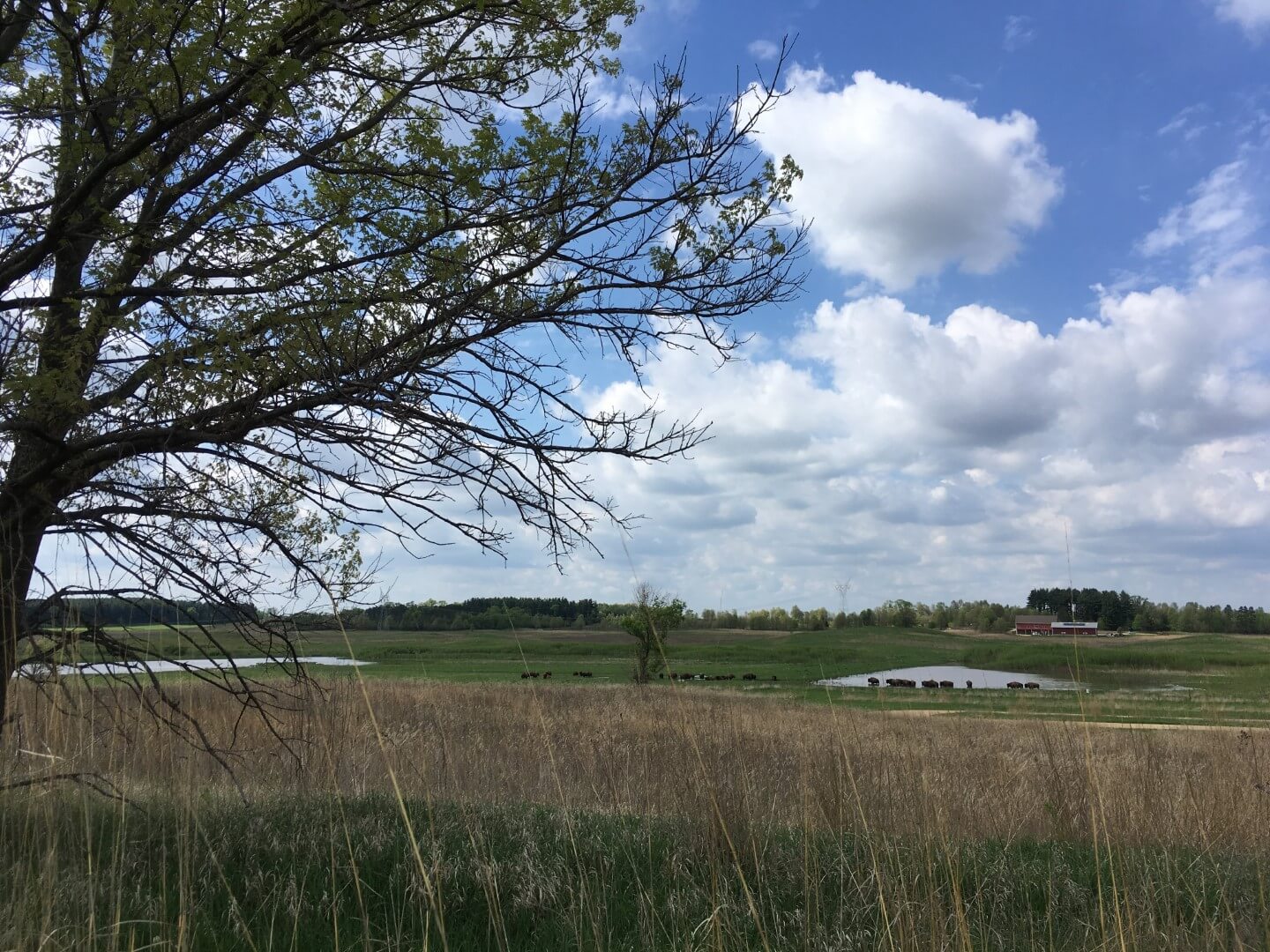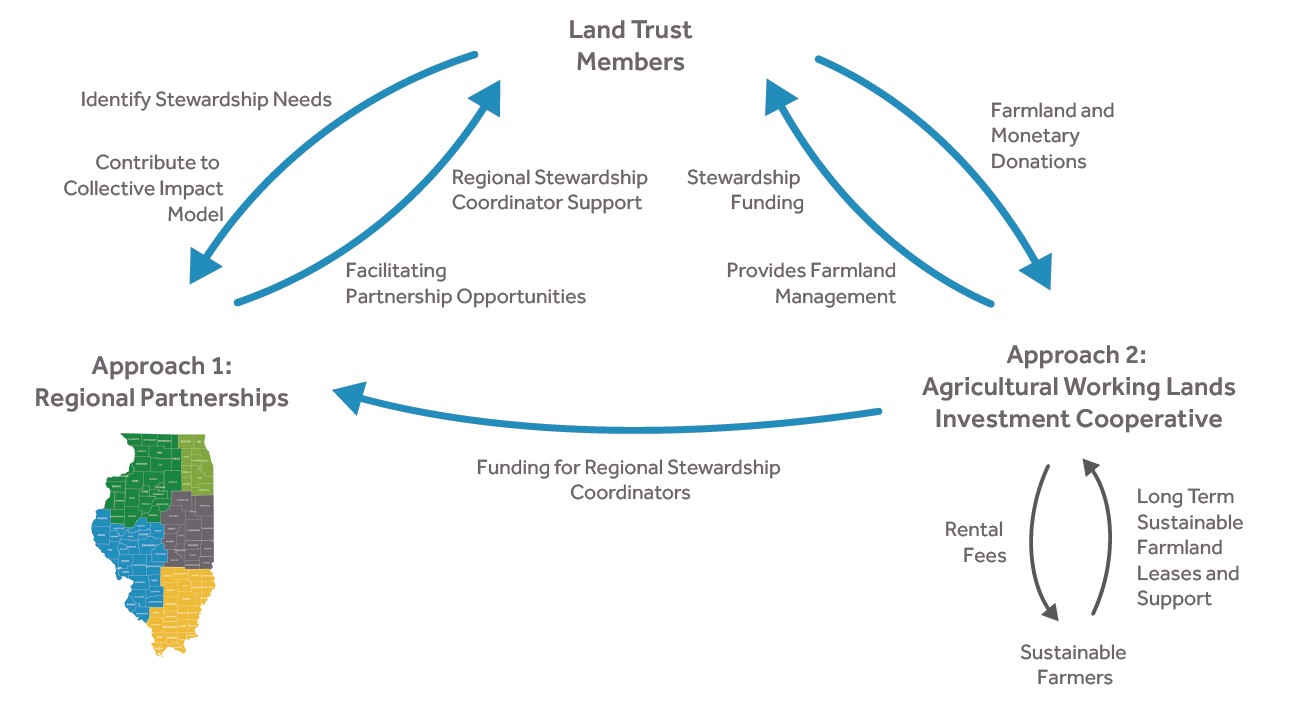
Why Our Work Is Needed
Roughly 50,000 acres of the 1.5 million total acres of conserved land in Illinois are owned by non-governmental conservation groups, also known as conservation land trusts. Traditionally, land trusts protected land, restored it, and transferred it to government entities for long-term ownership effectively transferring the responsibility of land stewardship to those entities. While this “protect, restore, transfer” model is still practiced, budgetary constraints across levels of government have undermined the viability of this model.
Macro-economic and political issues have resulted in insufficient funding for governmental conservation agencies to purchase land from conservation land trusts. Furthermore, governmental conservation agencies may also lack sufficient funding to steward conservation lands that they’ve acquired. This presents an opportunity to re-think the current model and develop innovative, sustainable approaches to support land protection in the state. However, data regarding the unmet need for land stewardship is scarce and few tools exist for conservation organizations to use to address these challenges.
Brief Overview of What We’re Doing
The project consisted of three phases, each aimed at considering the new approaches to conservation finance and building capacity to enable and enhance land stewardship.
Phase I explored and evaluated financing strategies for funding conservation in Illinois. We assessed infrastructure needs and developed priority financing strategies. Phase II of the project assessed stewardship needs across the state and piloted a novel funding approach through working lands. Phase III was focused on sharing the stewardship study and toolkit with Illinois conservation organizations and building a model for working lands funding approaches based on regenerative agriculture.
Project Materials and Resources
The additional resources below also contain helpful information about the project and the tools that have been developed by the project team.
 Phase I | The Dual Approach Framework
Phase I | The Dual Approach Framework
The Dual Approach Framework represents a new stewardship funding model to increase statewide capacity and build beneficial, lasting funding partnerships through a collective impact model. The resource below details a year of work developing strategies to address the funding shortfalls which impact land stewardship in Illinois.
Full Report: Preparing for Long-Term Stewardship: A Dual Approach for Illinois | Click to Expand
View/Download
This report lays out the Dual Approach Framework developed by the project team.
Phase II | Land Stewardship
Land stewardship is defined as the practice of providing long-term maintenance to ensure high-quality land is conserved in perpetuity. The resources in this section present findings from an 18-month research project to understand the current conditions impacting of conservation organization-based stewardship in Illinois.
Full Report: The State of Land Stewardship | Click to Expand
View/Download
This report, published in 2020, sheds light on how conservation organizations are carrying out land stewardship today, where they see major challenges and growth potential, and some best practices among this peer group.
Key Findings | Click to Expand
Explore the Data
Each visualization linked above displays a different component of the research. To fully explore the data, we suggest using the controls at the bottom of the visualization to display full screen view.
Tools & Resources | Click to Expand
View/Download the Case Study
A detailed report on the development of a working lands initiative for funding long-term stewardship.
View/Download the Civics Guide
A guide to the policies, practices, and processes impacting conservation in Illinois. Want to increase your impact? Read this.
Explore the Funding Matrix Tool
Explore conservation financing and funding opportunities using this interactive tool that assigns a source-specific “implementation readiness” score to each program based on eligibility requirements, applicability, and scalability.
Webinars | Click to Expand
Click on any of the following links to view the webinar.
The State of Land Stewardship in Illinois | Delta Institute
Developing a Working Lands Initiative for Funding Long Term Stewardship | Vital Lands Illinois
A Toolkit for Developing a Working Lands Initiative that Integrates Conservation Principles | Vital Lands Illinois
Phase III | Working Lands
Adopting a working lands program can help protect the soil and water resources on farms owned by conservation land trusts, help restore degraded soil and water resources, and provide an income for the conservation land trust. Soon, this section will feature resources that provide information needed to establish a working lands program for conservation land trusts.
Working Lands Program Management Framework | Click to Expand
View/Download
A guide to assist institutional landowners in implementing a working lands program
Business Model Supplement | Click to Expand
View/Download
A proposed business model for implementing a working lands program as a mechanism to finance conservation
Partners
- Jo Daviss Conservation Foundation
- Illinois Environmental Council
- Openlands
- Natural Land Institute
- Prairie State Conservation Coalition members
- Vital Lands Illinois members
Funding
The above land conservation and stewardship efforts would not have been possible without the generous support of Grand Victoria Foundation. Grand Victoria Foundation believes in a strong, livable, and equitable Illinois where every resident has an opportunity to thrive.

